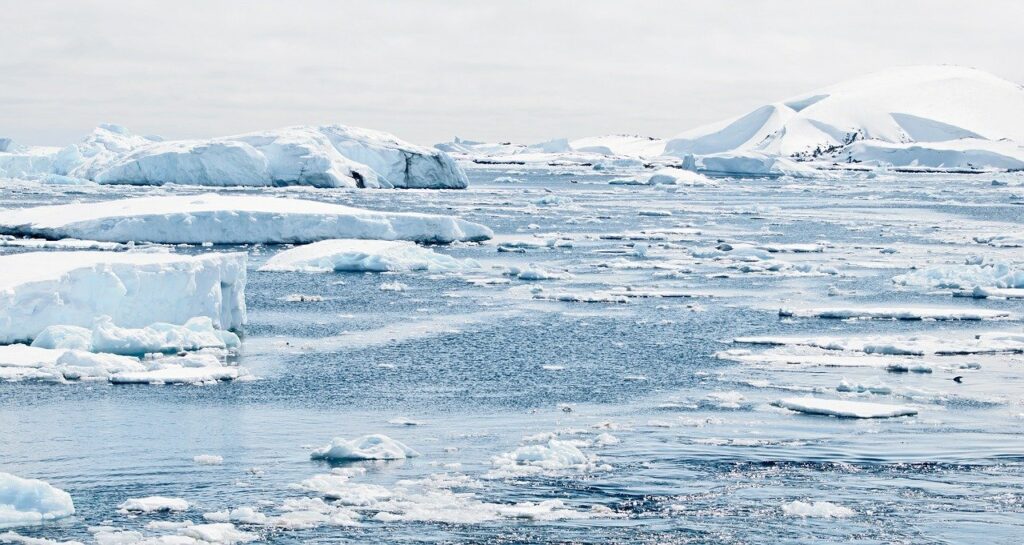An international team of researchers have observed rapid and unprecedented glacier retreat rates in West Antarctica by using an advanced remote imaging system known as synthetic aperture radar interferometry.
Thanks to the new technology, the activity of the Pope, Smith and Kohler glaciers in West Antarctica’s Amundsen Sea Embayment are being documented with levels of clarity and completeness never seen before.
Pietro Milillo, assistant professor of civil engineering at University of Houston and the article’s lead author, said, “Thanks to the new generation of radar satellite, we have been able in recent years to witness retreat rates faster than ever observed among glaciers around the world. That’s a warning sign that things are not settling, not stabilizing at all. This could have severe implications for the equilibrium of the entire glacier system in this area.”
Leveraging data collected by the TanDEM-X and COSMO-SkyMed satellites, Milillo is joined by University of California Irvine researchers and scientists from three national space agencies: NASA, the German Aerospace Center (DLR) and the Italian Space Agency (ASI).
The research team plans to expand the scientific understanding it gains from the relatively small and less studied Pope, Smith and Kohler glaciers to their giant and fragile West Antarctica neighbors, the Thwaites and Pine Island glaciers, as well as to the entire Antarctic glacier system.
“The issue here is that we found such a high retreat rate – so high that we actually see these three smaller glaciers could actually capture the basin from the nearby Thwaites glacier, which would cause Thwaites to lose more mass,” Milillo said. “In Antarctica, glaciers don’t melt because of interaction with the sun. They melt because they accelerate and inject more ice into the ocean. That is one of the principal mechanisms of mass loss.”
At the southmost point of the Earth, the South Pole is in darkness most of the year. Its extreme weather means researchers can visit for only short periods of time, limiting their research.
“Radar is perfect for those applications. The beauty of radar is that it can penetrate clouds. It can look in any weather condition. It is also an active sensor, so we don’t have to rely on the light of the sun,” said Milillo. “In the past, we needed to wait several years in order to accumulate enough useful data. For that reason, we could observe only long-term trends. Now we can look at retreats on a monthly basis and can capture a new level of detail that will help improve glacier models and, in turn, refine our sea level rise estimates.”
Among those monthly measurements, the team looks at bi-weekly elevation changes to assess retreat at a glacier’s grounding line, the boundary on the underside of a glacier where frozen land meets warmer water. The grounding line becomes especially vulnerable because the warm water carves out an ice shelf that starts to float and could easily break completely away.
“If all ice above floatation in Antarctica would melt, the sea level would go up on average by 58m (190ft),” Milillo said. “If the signals we are looking at are confirmed, the mass loss from Antarctica, as well as Greenland, will rise. As they rise, the sea level will increase.”
“If all these glaciers melt, the sea water could raise rapidly. With 267 million people worldwide living on land less than 2m (6.6ft) above sea level, an abrupt migration could result. Also, subsidence could eventually see large structures sinking in vulnerable locales, including Houston,” Milillo said. “That’s why people should care about this issue. Even if doesn’t affect their life, it will affect their kid’s life and their grandkid’s life.”
For now, Milillo concentrates on the near future, including NASA’s plans in 2023 to launch its NISAR satellite, designed to provide even more quantity and more frequent data acquisitions than the current state-of-the-art synthetic aperture radar. Also known as NASA-ISRO SAR, the new satellite will measure the changes in ecosystems, dynamic surfaces and ice masses, providing Milillo and fellow scientists a bolder picture of our changeable Earth.
To view the full paper published in article published in Nature Geosciences, click here.



